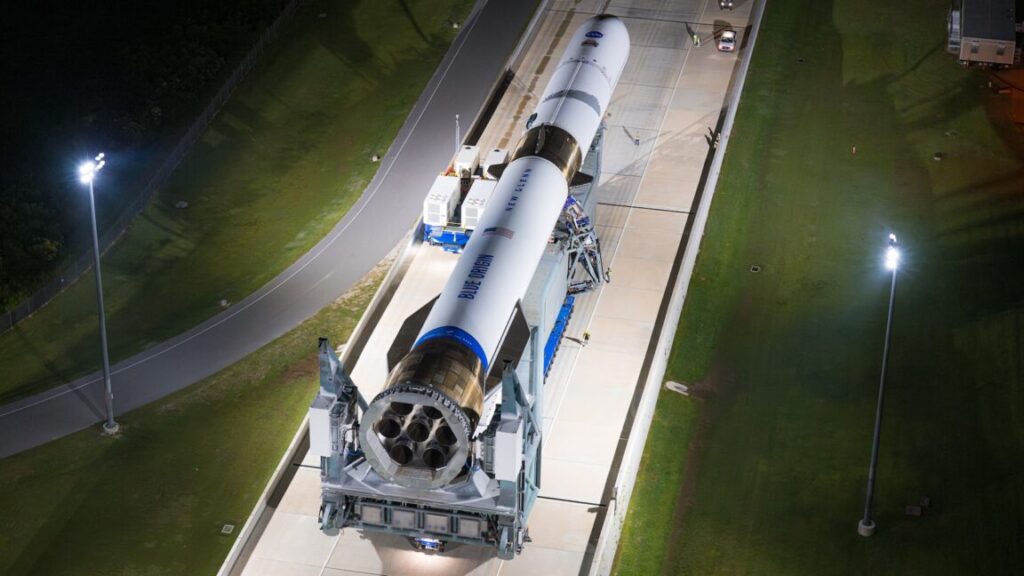Heading east, the rocket will surpass the speed of sound in a little over a minute. After soaring through the stratosphere, New Glenn will shut down its seven booster engines and shed its first stage a little more than 3 minutes into the flight. Twin BE-3U engines, burning liquid hydrogen, will ignite to finish the job of sending the ESCAPADE satellites toward deep space. The rocket’s trajectory will send the satellites toward a gravitationally-stable location beyond the Moon, called the L2 Lagrange point, where it will swing into a loosely-bound loiter orbit to wait for the right time to head for Mars.
Meanwhile, the New Glenn booster, itself measuring nearly 20 stories tall, will begin maneuvers to head toward Blue Origin’s recovery ship floating a few hundred miles downrange in the Atlantic Ocean. The final part of the descent will include a landing burn using three of the BE-4 engines, then downshifting to a single engine to control the booster’s touchdown on the landing platform, dubbed “Jacklyn” in honor of Bezos’ late mother.
The launch timeline for New Glenn’s second mission.
Credit:
Blue Origin
New Glenn’s inaugural launch at the start of this year was a success, but the booster’s descent did not go well. The rocket was unable to restart its engines, and it crashed into the sea.
“We’ve incorporated a number of changes to our propellant management system, some minor hardware changes as well, to increase our likelihood of landing that booster on this mission,” said Laura Maginnis, Blue Origin’s vice president of New Glenn mission management. “That was the primary schedule driver that kind of took us from from January to where we are today.”
Blue Origin officials are hopeful they can land the booster this time. The company’s optimism is enough for officials to have penciled in a reflight of this particular booster on the very next New Glenn launch, slated for the early months of next year. That launch is due to send Blue Origin’s first Blue Moon cargo lander to the Moon.
“Our No. 1 objective is to deliver ESCAPADE safely and successfully on its way to L2, and then eventually on to Mars,” Maginnis said in a press conference Saturday. “We also are planning and wanting to land our booster. If we don’t land the booster, that’s OK. We have several more vehicles in production. We’re excited to see how the mission plays out tomorrow.”
Tracing a kidney bean
ESCAPADE’s path through space, relative to the Earth, has the peculiar shape of a kidney bean. In the world of astrodynamics, this is called a staging or libration orbit. It’s a way to keep the spacecraft on a stable trajectory to wait for the opportunity to go to Mars late next year.

